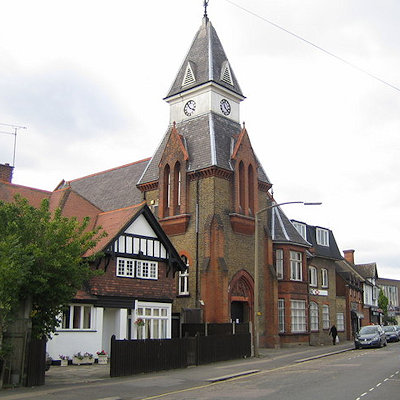
Like us on Facebook
PLACE NAMES


 
|
|
Loughton
|

|
|
|
Loughton is bounded by Epping Forest to the west and the Roding river valley to the east. After the Epping Forest Act of 1878 prohibited any further expansion of the town into the forest, the forest and the river have formed two natural barriers constraining any expansion westwards or eastwards, and consequently most of the growth in the last 100 years has been through infilling and construction of new housing estates to the north and south of the old town centre, plus the purpose-built suburb of Debden to the north-east. The Roding valley is somewhat marshy and the river is prone to flooding, so construction close to the river is very limited and the majority of the land around it has been designated as a nature reserve or left as open space parkland. The M11 motorway that follows the course of the Roding along this section of its length is built on raised banks or flyovers, to avoid potential problems with flooding.
The highest parts of the town are the roads that border the forest's edge; from the green outside the Gardeners Arms pub near the junction of York Hill, Pump Hill and Baldwins Hill there are views of London, south-west Essex, Kent and Surrey. From here, on a clear day, there is a panoramic view of London landmarks and the North Downs beyond. There are numerous other fine views from different parts of the town, including one roughly at the junction of Traps Hill, Borders Lane, Alderton Hill and Spareleaze Hill, and another on Spring Grove and Hillcrest Road. In the valley between these two hills flows Loughton Brook, which rises in Epping Forest near Waltham Abbey and flows through the forest and Baldwins and Staples Ponds before traversing the town and emptying into the Roding.
There are several distinctive neighbourhoods in Loughton mostly identifiable by the building types incorporated during their development:
- Old Loughton refers to the original settlement which grew up around Loughton High Road.
- Debden occupies about 650 acres/225 hectares to the north east of Loughton; London County Council built the woodland development between 1947 and 1952 out of county to rehouse people from London whose homes had been destroyed or damaged during the Second World War.
- Debden Green is a hamlet set around an ancient green in the north-east corner of the parish. Debden House in Debden Green is an adult learning and conference centre run by the London Borough of Newham; the grounds include a campsite.
- Goldings Manor is a modern estate of mostly large detached houses built in the grounds of 'Goldings Manor', a large mansion demolished after being hit during the Blitz. It comprises four residential streets; Broadstrood, Campions, Garden Way and Stanmore Way.
- Great Woodcote Park is a modern housing estate at the southern end of Loughton, built on the site of the former North Farm.
- Little Cornwall is a hilly area of north-west Loughton closest to Epping Forest characterised by steep hills, weatherboarded houses, narrow lanes and high holly hedges.
- Roding Estate or South Loughton is the area south-east of the London Underground Central line and was mostly built up between the First World War and Second World War.
Between 1839 and 31 March 2000 policing and crime prevention was provided by the Metropolitan Police. From 1 April 2000 responsibilities were transferred to the Essex Police. Telephone numbers in the town have the London (020) area code. This anomaly is shared with Chigwell, Thames Ditton, Molesey and Ewell.
|
 Feel free to Email me any additions or corrections Feel free to Email me any additions or corrections
LINKS AVAILABLE TO YOUR SITE
| |





